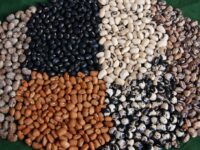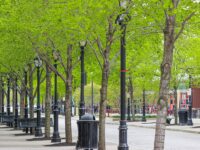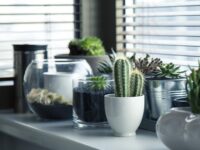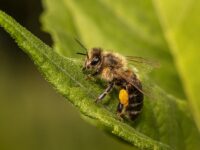The study of preexisting designs is a common practice for guidance in problem solving. Innovators can turn to structures around them for inspiration, and what’s a more complex and functioning system than nature? In terms of hydrophobic properties, or water-repellant behavior, scientists strive to mimic the lotus effect. This effect is named after the leaves of lotus plants, which demonstrate a self-cleaning nature, as microscopic structures ensure that water, dirt, bacteria, and other materials simply roll off the surface. Scientists have examined this plant’s biological and chemical compositions, providing constructive insight into waterproofing materials and advancing technology in a uniquely natural way.
Scientists have examined this plant’s biological and chemical compositions, providing constructive insight into waterproofing materials and advancing technology in a uniquely natural way.
The structure and chemical composition of lotus has a greater stability and water repellency compared to other plants, thus making it an efficient model to study. The lotus leaf’s rough shape and wax tubules generate a surface that resists water; this rough exterior is covered with uneven bumps called papillae. These papillae induce water droplets into spheres to reduce the droplets’ surface energy, a measure of the energy present at the surface of a material due to the disruption of intermolecular bonds. Molecules want to have low surface energy, so molecules at the surface of a solid will attempt to create new bonds to become more stable and exist in a lower-energy state. The formation of a sphere is the geometric way to minimize the water’s surface energy. In another process called wetting, two surfaces touch to create agreeable, lower-energy interactions through adhesion, minimizing the solid’s surface energy. When a water droplet lies on a lotus leaf, stretching to fill the spaces in the uneven surface would increase the water droplet’s surface area and thus surface energy. Therefore, wetting is inhibited, and geometrical optimizations occur to reduce surface energy. The lotus’ microscopic bumps cause the contact angle to surpass 150 degrees, prompting the droplets to roll right off the leaf. For reference, the contact angle of a water droplet on a hydrophilic surface is less than 30 degrees, and a hydrophobic surface’s contact angle with water starts at 90 degrees and increases from there. Additionally, the leaf’s wax tubules consist of nonpolar methyl groups, further rejecting adhesion with water because of water’s polar nature.
As the lotus plant sows the seed of scientific innovation, its bloom serves as a reminder to let the dirt roll off our backs and prevail through adverse conditions.
Wilhelm Barthlott, a German botanist and materials scientist, struggled to create hydrophobic material that would repel external substances while adhering to the object being protected. After discovering the lotus effect, he created the “honey spoon” — a product with an irregular silicone surface that caused honey to roll off it. This product sparked an interest from large companies who started to research applications for the technique. Applications of waterproofed materials range from the prevention of residual graffiti on facades to coating valuable objects such as cell phones. Waterproofed materials have an extended life and an improved appearance, proving advantageous in many ways. For example, the lotus effect promotes visibility when applied to glass and windshields. A hydrophobic layer on the glass can decrease glass corrosion, hinder dirt’s ability to stick, and reduce cleaning expenses. Sto Corporation’s Lotusan paint is a self-cleaning coat of paint that mimics the lotus leaf microstructure as well. Like most products that mimic the effect, the ridges that rise and fall on the surface minimize water and dirt’s contact area. It protects buildings’ surfaces against wear and tear, weather, and mold. Furthermore, microorganisms have a reduced chance of sticking to the surface; germs are less likely to survive on a surface coated in Lotusan. Nanotechnology, which includes robots, textiles, and much more, is another area that has replicated the self-cleaning properties of the lotus plant. A rough nanoscopic surface can be etched onto the exterior of materials to maximize water repellency. Water repellent nanofabrics can consist of nanofibers or regular fabric coated in a solution of nanoparticles. In clothing or interior textiles, water- and stain-resistant properties are vastly beneficial. Fiber Secret’s Lotushirt contains nanofabric designed to mimic the meticulous, uneven structures of the lotus leaf. The outside of the shirt is able to hold off stains and water, leaving customers satisfied with its lightness and durability.
In addition to the extensive application of the lotus effect to establish water-resistant surfaces, the hydrophobic properties of the plant accentuate its own beauty. From murky, muddy environments, its vibrant petals and sturdy leaves rise. As the lotus plant sows the seed of scientific innovation, its bloom serves as a reminder to let the dirt roll off our backs and prevail through adverse conditions.
Image Source: Pixabay
Source: 1






